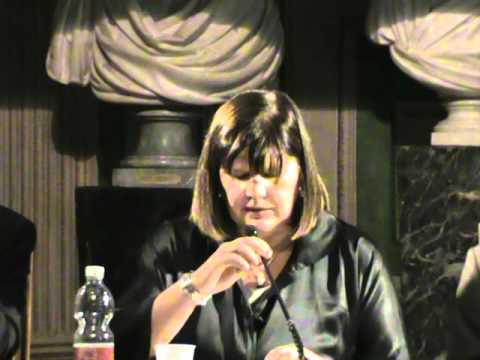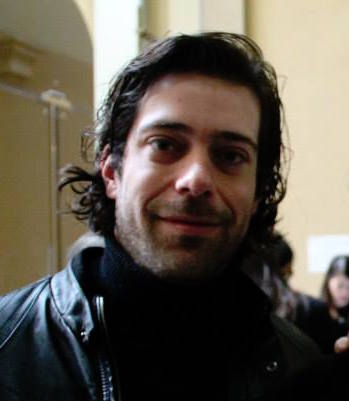Studying at the University of Verona
Here you can find information on the organisational aspects of the Programme, lecture timetables, learning activities and useful contact details for your time at the University, from enrolment to graduation.
Academic calendar
The academic calendar shows the deadlines and scheduled events that are relevant to students, teaching and technical-administrative staff of the University. Public holidays and University closures are also indicated. The academic year normally begins on 1 October each year and ends on 30 September of the following year.
Course calendar
The Academic Calendar sets out the degree programme lecture and exam timetables, as well as the relevant university closure dates..
| Period | From | To |
|---|---|---|
| I semestre (Lingue e letterature straniere) | Sep 28, 2020 | Jan 9, 2021 |
| II semestre (Lingue e letterature straniere) | Feb 15, 2021 | May 29, 2021 |
| Session | From | To |
|---|---|---|
| ESAMI LINGUE - sessione invernale | Jan 11, 2021 | Feb 13, 2021 |
| ESAMI LINGUE - sessione estiva | May 31, 2021 | Jul 24, 2021 |
| ESAMI LINGUE - sessione autunnale | Aug 30, 2021 | Sep 25, 2021 |
| Session | From | To |
|---|---|---|
| LAUREE LINGUE - sessione autunnale (a.a. 2019/20) | Nov 2, 2020 | Nov 7, 2020 |
| LAUREE LINGUE - sessione straordinaria (a.a. 2019/20) | Apr 7, 2021 | Apr 13, 2021 |
| LAUREE LINGUE - sessione estiva (a.a. 2020/21) | Jul 5, 2021 | Jul 10, 2021 |
| Period | From | To |
|---|---|---|
| Festa di Ognissanti | Nov 1, 2020 | Nov 1, 2020 |
| Festa dell'Immacolata | Dec 8, 2020 | Dec 8, 2020 |
| Festa della liberazione | Apr 25, 2021 | Apr 25, 2021 |
| Festa del lavoro | May 1, 2021 | May 1, 2021 |
| Festa del Santo Patrono | May 21, 2021 | May 21, 2021 |
| Festa della Repubblica | Jun 2, 2021 | Jun 2, 2021 |
Exam calendar
Exam dates and rounds are managed by the relevant Foreign Languages and Literatures Teaching and Student Services Unit.
To view all the exam sessions available, please use the Exam dashboard on ESSE3.
If you forgot your login details or have problems logging in, please contact the relevant IT HelpDesk, or check the login details recovery web page.
Academic staff
 giulia.nalesso@univr.it
giulia.nalesso@univr.it
 flavia.palma@univr.it
flavia.palma@univr.it
 sara.paolini@univr.it
sara.paolini@univr.it
 daniela.spina@univr.it
daniela.spina@univr.it
Study Plan
The Study Plan includes all modules, teaching and learning activities that each student will need to undertake during their time at the University.
Please select your Study Plan based on your enrollment year.
1° Year
| Modules | Credits | TAF | SSD |
|---|
1st foreign language2nd foreign language1st foreign literature 1 LM. Forms, genres and critical approaches2nd foreign literature 1 LM. Forms, genres and critical approaches2° Year activated in the A.Y. 2021/2022
| Modules | Credits | TAF | SSD |
|---|
1st foreign literature disciplinary area2nd foreign literature disciplinary area or textual and comparative studies1st or 2nd foreign literature 2 LM. Critical methodologies and textual interpretationA philology to be chosen among the following (philology must be related to one of the chosen languages)History of the 1st or the 2nd foreign language| Modules | Credits | TAF | SSD |
|---|
1st foreign language2nd foreign language1st foreign literature 1 LM. Forms, genres and critical approaches2nd foreign literature 1 LM. Forms, genres and critical approaches| Modules | Credits | TAF | SSD |
|---|
1st foreign literature disciplinary area2nd foreign literature disciplinary area or textual and comparative studies1st or 2nd foreign literature 2 LM. Critical methodologies and textual interpretationA philology to be chosen among the following (philology must be related to one of the chosen languages)History of the 1st or the 2nd foreign language| Modules | Credits | TAF | SSD |
|---|
Legend | Type of training activity (TTA)
TAF (Type of Educational Activity) All courses and activities are classified into different types of educational activities, indicated by a letter.
Italian literature in the international context (2020/2021)
Teaching code
4S006122
Teacher
Coordinator
Credits
6
Language
English
Scientific Disciplinary Sector (SSD)
L-FIL-LET/10 - ITALIAN LITERATURE
Period
I semestre (Lingue e letterature straniere) dal Sep 28, 2020 al Jan 9, 2021.
Learning outcomes
The main aim of the course is the detailed study of Italian literature through the close analysis of a group of literary texts, which have a meaningful role in the literary and cultural international context. At the end of the course the student will be able to: - analyse and consider a literary text as a complex form, in constant dialogue with other literatures and cultures, in particular in their translation and international circulation - show competency in the framework of Italian literature’s European and extra-European tradition
Program
TOPIC: THE «DECAMERON» FROM ITALY TO MEDIEVAL AND RENAISSANCE EUROPE
The course will be devoted to Giovanni Boccaccio’s «Decameron». First of all, the «Decameron» will be analysed taking into account its structure, its topics, and its style, and considering its relations with both the other literary works written by Boccaccio and the Classical and Romance literary tradition. Then, the focus will move to the examination of the forms of the Centonovelle’s reception during the Middle Ages and the Renaissance: on the one hand, the sixteenth-century censorship of the «Decameron»; on the other, the treatment of Boccaccio’s novellas in Europe between the fourteenth and the seventeenth centuries, with special attention to England and the role of France as 'mediator'. The analysis will deal with translations and rewritings of specific tales, but also with autochthonous examples of collections of novellas based on Italian models.
_____________
TEACHING METHODS
Taught classes. Analysis and interpretation of meaningful novellas written by Boccaccio and their English translations and rewritings. The Moodle will be used to provide students with further teaching materials.
The course will be delivered both in presence and online.
_____________
BIBLIOGRAPHY:
1. a complete edition of the «Decameron» (suggested editions: Giovanni Boccaccio, "Decameron", a cura di A. Quondam,
M. Fiorilla e G. Alfano, Milano, BUR; Giovanni Boccaccio, "Decameron", a cura di V. Branca, Torino, Einaudi; Giovanni
Boccaccio, "Decameron", a cura di V. Branca, Milano, Oscar Mondadori).
Students have to read the following pats of the «Decameron»:
• “Proemio”;
• Day I: “Introduzione”; novellas 1, 2, 3;
• Day II: novellas 2, 5, 7, 10;
• Day III: novellas 1, 2, 5, 6, 8, 10;
• Day IV: “Introduzione”; novellas 1, 2, 5, 9;
• Day V: novellas 4, 8, 9;
• Day VI: novellas 1, 2, 4, 7, 10;
• Day VII: novellas 1, 5, 7, 8, 9;
• Day VIII: novellas 1, 2, 3, 4, 7;
• Day IX: novellas 2, 6, 10;
• Day X: novellas 4, 5, 9, 10;
• “Conclusione dell’autore”;
2. Giancarlo Alfano, “Introduzione alla lettura del ‘Decameron’ di Boccaccio”, Roma-Bari, Laterza, 2014 (chapters 2-3);
3. Guyda Armstrong, “The English Boccaccio. A History in Books”, Toronto-Buffalo-London, University of Toronto Press,
2013 (chapter 3, from p. 161 to p. 172; chapter 4, from p. 216 to p. 223);
4. Giuseppe Chiecchi, “Nell’arte narrativa di Giovanni Boccaccio”, Firenze, Olschki, 2017 (chapter 4);
5. Carlo Delcorno, "Ironia/parodia", in "Lessico critico decameroniano", a cura di Renzo Bragantini e Pier Massimo Forni,
Torino, Bollati Boringhieri, 1995, pp. 162-191;
6. Mario Lavagetto, “Oltre le usate leggi. Una lettura del ‘Decameron’”, Torino, Einaudi, 2019, pp. 25-53;
7. Luigi Surdich, “La cornice di amore. Studi sul Boccaccio”, Pisa, ETS, 1987 (chapter 5).
Students who need an alternative bibliography only in English may write an email to: flavia.palma@univr.it
| Author | Title | Publishing house | Year | ISBN | Notes |
|---|---|---|---|---|---|
| Giovanni Boccaccio | Decameron | BUR | 2013 | Parti indicate nella sezione "Bibliografia" del programma. Edizioni alternative: Giovanni Boccaccio, "Decameron", a cura di V. Branca, Torino, Einaudi; Giovanni Boccaccio, "Decameron", a cura di V. Branca, Milano, Oscar Mondadori | |
| Giancarlo Alfano | Introduzione alla lettura del ‘Decameron’ di Boccaccio | Laterza | 2014 | Capitoli 2-3 | |
| SURDICH, L. | La cornice di amore. Studi sul Boccaccio | ETS | 1987 | Capitolo 5 | |
| Renzo Bragantini e Pier Massimo Forni (a cura di) | Lessico critico decameroniano | Bollati Boringhieri | 1995 | Solo il saggio di Carlo Delcorno ("Ironia/parodia") alle pp. 162-191. | |
| G. Chiecchi | Nell'arte narrativa di Boccaccio | L.S.Olschki | 2017 | Capitolo 4 | |
| Lavagetto Mario | Oltre le usate leggi. Una lettura del ‘Decameron’ | Einaudi | 2019 | PP. 25-53 | |
| Guyda Armstrong | The English Boccaccio. A History in Books | University of Toronto Press | 2013 | Cap. 3 da p. 161 a p. 172; cap. 4 da p. 216 a p. 223. |
Examination Methods
There will be a final oral exam. Students must demonstrate a good knowledge of:
1) the «Decameron»’s structure, topics, and style;
2) the relationships between the «Decameron», the other literary works by Boccaccio and the Classical and Romance literary tradition;
3) the forms of censorship of the «Decameron»;
3) the reception of Boccaccio’s novellas in the European context.
Students will also have to prove to be able to analyse, comment and contextualise the novellas studied during the course.
The exam will be carried out in the same way for both attending and non-attending students.
Type D and Type F activities
| years | Modules | TAF | Teacher |
|---|---|---|---|
| 1° 2° | Laboratorio di introduzione alle metodologie e tecnologie didattiche - Lingua e cultura francese | F |
Maria Francesca Bonadonna
(Coordinator)
|
| 1° 2° | Laboratorio di introduzione alle metodologie e tecnologie didattiche - Lingua e cultura inglese | F |
Paola Vettorel
(Coordinator)
|
| 1° 2° | Laboratorio di introduzione alle metodologie e tecnologie didattiche - Lingua e cultura spagnola | F |
Francesca Dalle Pezze
(Coordinator)
|
| 1° 2° | Laboratorio di introduzione alle metodologie e tecnologie didattiche - Lingua e cultura tedesca | F |
Sibilla Cantarini
(Coordinator)
|
To discover all the teaching activities accredited by the foreign teaching college click here
Career prospects
Module/Programme news
News for students
There you will find information, resources and services useful during your time at the University (Student’s exam record, your study plan on ESSE3, Distance Learning courses, university email account, office forms, administrative procedures, etc.). You can log into MyUnivr with your GIA login details: only in this way will you be able to receive notification of all the notices from your teachers and your secretariat via email and soon also via the Univr app.
Student login and resources
Gestione carriere
Attività accreditate D/F
Calendario didattico dettagliato
Competenze linguistiche (prima e seconda lingua)
Language skills
Compilazione del piano didattico
Corso di Lingua portoghese
Double degree
The University of Verona, through a network of agreements with foreign universities, offers international courses that enable students to gain a Double/Joint degree at the time of graduation. Indeed, students enrolled in a Double/Joint degree programme will be able to obtain both the degree of the University of Verona and the degree issued by the Partner University abroad - where they are expected to attend part of the programme -, in the time it normally takes to gain a common Master’s degree. The institutions concerned shall ensure that both degrees are recognised in the two countries.
Places on these programmes are limited, and admissions and any applicable grants are subject to applicants being selected in a specific Call for applications.
The latest Call for applications for Double/Joint Degrees at the University of Verona is available now!
Documents
| Title | Info File |
|---|---|
|
|
pdf, it, 316 KB, 28/09/23 |
|
|
octet-stream, it, 22 KB, 28/09/23 |
|
|
pdf, it, 520 KB, 28/09/23 |
Erasmus+ e altre esperienze all'estero
Linguistic training CLA
Percorso verso l'insegnamento
Una delle possibilità per gli studenti dopo il conseguimento della laurea magistrale è l’insegnamento nella scuola: l’Università degli Studi di Verona è tra gli enti accreditati dal MIUR per l'erogazione di corsi di formazione e aggiornamento e qualificazione delle competenze per insegnanti. Il percorso per diventare insegnante è legato alle seguenti condizioni:
1a CONDIZIONE
Il possesso della laurea magistrale o a ciclo unico, oppure diploma di II livello dell’alta formazione artistica, musicale e coreutica, oppure titolo equipollente o equiparato, coerente con le classi di concorso vigenti alla data di indizione del concorso; il futuro insegnante dovrà, inoltre, soddisfare i requisiti di accesso previsti per la classe di concorso scelta.
Per le classi di concorso:
- A-24 (Lingue e culture straniere negli istituti di istruzione secondaria di II grado) e
- A-25 (Lingua inglese e seconda lingua comunitaria nella scuola secondaria I primo grado)
sono previsti i seguenti requisiti di accesso (vedi l’allegato A al DM 259/2017):
1) 18 CFU nei settori scientifico disciplinari L-LIN/01 e/o L-LIN/02
2) 36 CFU della lingua di specializzazione scelta
3) 24 CFU della letteratura relativa alla lingua di specializzazione scelta.
I requisiti specifici delle classi di concorso A-24 e A-25 possono essere soddisfatti nell’ambito dei piani didattici o negli esami a scelta libera superati all’interno del percorso di studio universitario (Laurea Triennale e Magistrale), oppure attraverso l’iscrizione a corsi singoli.
Il requisito relativo alla lingua di specializzazione (2) è soddisfatto (sulla base degli esami previsti nel piano didattico) nell’ambito del percorso formativo che comprende una laurea triennale dell’area di Lingue e Letterature Straniere, seguita da una laurea magistrale della medesima area (qualsiasi Corso di Laurea triennale e magistrale dell’area di Lingue e Letterature Straniere).
Per verificare i requisiti relativi alla letteratura di specializzazione (3) e agli insegnamenti di linguistica che appartengono ai settori scientifico-disciplinari di L-LIN/01 e L-LIN/02 (1), invece, gli studenti sono invitati a consultare il proprio piano didattico per verificare il numero di CFU previsti nel percorso formativo.
2a CONDIZIONE
Il possesso dei 24 crediti formativi universitari o accademici acquisiti in forma curricolare, aggiuntiva o extra curricolare nelle discipline antropo-psico-pedagogiche e nelle metodologie e tecnologie didattiche, garantendo comunque il possesso di almeno 6 CFU conseguiti in ciascuno di almeno tre dei seguenti quattro ambiti disciplinari:
1) pedagogia;
2) pedagogia speciale e didattica dell’inclusione;
3) psicologia; antropologia;
4) metodologie e tecnologie didattiche.
Percorso formativo 24 CFU
Consente di acquisire uno dei requisiti di partecipazione al concorso nazionale per l’accesso al “percorso annuale di formazione iniziale e prova” su posti comuni e di sostegno, ai sensi del D.Lgs 13 aprile 2017, n. 59 come modificato dalla legge n.145 del 30/12/2018 (c. dal 792 al 796).
I settori scientifico disciplinari, gli obiettivi formativi, le modalità organizzative e gli eventuali costi sono stati stabiliti dal D.M. 10 agosto 2017, n. 616.
Per sapere quali insegnamenti della propria carriera vengano automaticamente riconosciuti si rimanda alla pagina del sito di Ateneo dedicata al percorso formativo 24 CFU.
Si consiglia agli interessati di consultare la pagina https://www.univr.it/it/i-nostri-servizi/futuri-studenti/post-laurea/formazione-degli-insegnanti in costante aggiornamento, in particolare sezione documenti in cui vengono pubblicati formulari, programmi degli insegnamenti ed elenchi di studenti ammessi.
Tra gli insegnamenti automaticamente riconosciuti nell’ambito dei 24 CFU vi sono: Insegnamento delle lingue (L-LIN/02) e Apprendimento delle lingue (L-LIN/02), previsti nel piano didattico del curriculum Linguistico-didattico del CdS di Lingue e letterature straniere (LLS).
Gli studenti immatricolati nel CdS di LLS che hanno scelto i curricula Letterario e Artistico possono comunque inserire tali insegnamenti nel piano di studi come crediti D (a scelta libera).
Gli studenti immatricolati negli altri CdS triennali del Dipartimento di Lingue e letterature straniere (Lingue e culture per il turismo e il commercio internazionale; Lingue e culture per l’editoria [a esaurimento]; Lingue e letterature per l’editoria e i media digitali) posso inserire tali insegnamenti nella propria carriera solo su eventuale autorizzazione preventiva del Presidente del Collegio Didattico (mediante Help desk).
Il soddisfacimento della 1a e 2a condizione è requisito obbligatorio per partecipare ai concorsi di abilitazione o specifici percorsi post lauream previsti dal Ministero.
Graduation
Stage e tirocini
Le attività di stage sono finalizzate a far acquisire allo studente una conoscenza diretta in settori di particolare interesse per l’inserimento nel mondo del lavoro e per l’acquisizione di abilità professionali specifiche.
Le attività di stage sono svolte sotto la diretta responsabilità di un singolo docente presso studi professionali, enti della pubblica amministrazione, aziende accreditate dall’Ateneo veronese.
I crediti maturati in seguito ad attività di stage saranno attribuiti secondo quanto disposto nel dettaglio dal “Regolamento d’Ateneo per il riconoscimento dei crediti maturati negli stage universitari” vigente.
- Tutte le informazioni in merito agli stage per futuri studenti sono disponibili alla pagina Stage e tirocini.
- Tutte le informazioni in merito agli stage per studenti iscritti sono pubblicate in MyUnivr - come fare per - stage e tirocini.
- Tutte le informazioni in merito agli stage per le aziende sono disponili alla pagina Stage e tirocini per azienze.
Ulteriori informazioni al seguente link https://www.univr.it/it/i-nostri-servizi/gestione-carriere-studenti-lingue-e-letterature-straniere/stage-e-tirocini-lingue-e-letterature-straniere

 +39 045802 8409
+39 045802 8409



























